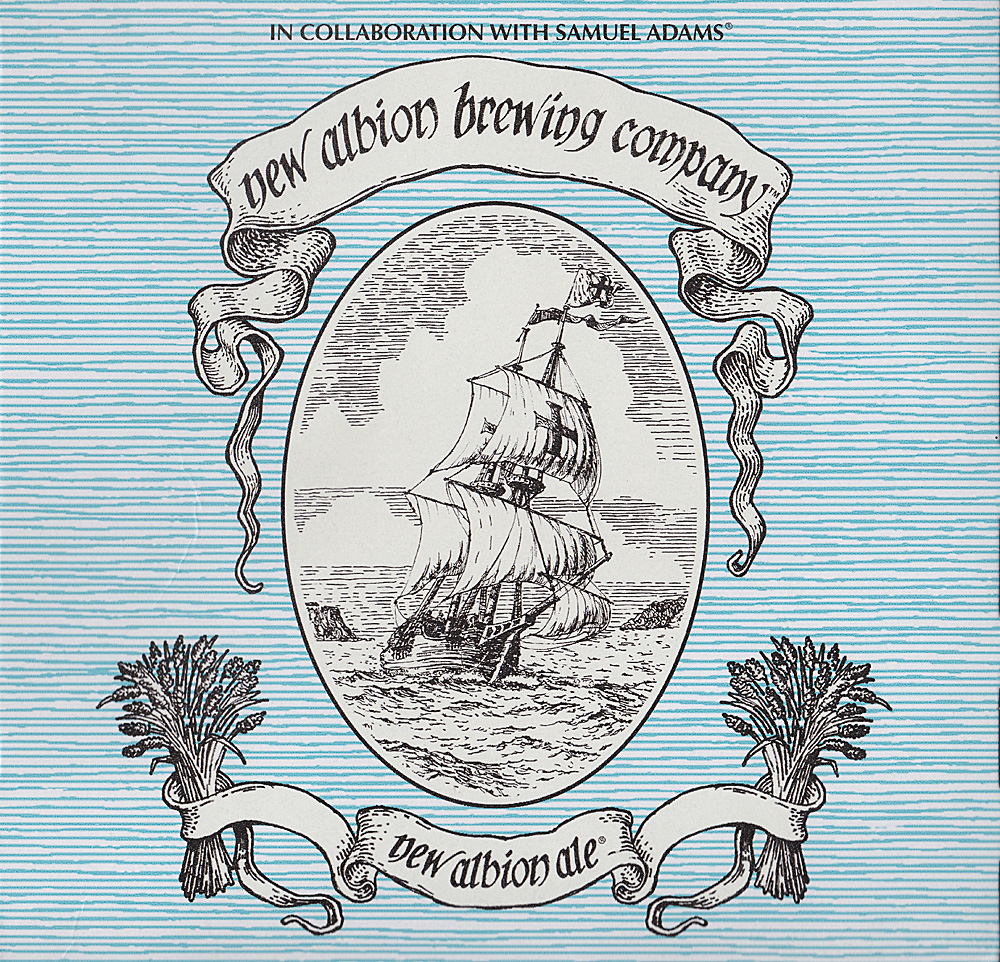

New Albion Ale





Review Date 2/6/2013 Last Updated 3/27/2013 By John Staradumsky
Ah, the good old days. Thatís what people always call them, anyway. Thing is, for beer drinkers, the good old days werenít always so good. Thatís because there was a time in America, a time between the repeal of Prohibition in 1933 and the dawn of the craft beer era in the early nineteen eighties, when beer choice in America just wasnít so good.
Time was, of course, when all American beer was local. And why not? Most beers, like good bread and baked goods, are best enjoyed fresh. Like the local baker, then, the small local brewer provided fresh product for the surrounding cities and towns, and a pail or ďgrowlerĒ of fresh beer with the evening meal was something to look forward to.
As is so often the case, however, new technology came along that changed the way Americans enjoyed their beer. Artificial refrigeration, introduced on railroad cars in the late 19th century revolutionized the brewing industry. For the first time, a brewer could sell his beer over greater distances without fear of spoilage. Reaching new markets and customers, brewers like Anheuser-Busch and Pabst could now enjoy economies of scale that made their prices more competitive and their products more attractive to consumers. The first nail in the coffin of the small brewery had been hammered in.
For those local breweries that did survive the rise of the large national breweries, prohibition proved an even more formidable foe to overcome. Few did, and while national and regional brewers managed to stay alive during those years making near beer, ice cream, malted milk, and soap, most small brewers closed their doors in 1920 never to reopen.
To get an idea of how first refrigerated boxcars and then prohibition took its toll on the number of breweries in America, and you can see the trend with over 3000 breweries in 1870, just prior to the advent of the refrigerated boxcar. By 1915, 5 short years before Prohibition began, that number had dwindled to 1345. Shortly after repeal America had only a paltry 776 breweries, mostly national and regional brewers. *
For the most part, they brewed very similar beers, pale lagers in the pilsner style that became lighter and lighter over the years as they were diminished with light grain adjuncts. The taste for them was only increased by World War II, when a generation of young men was weaned on beers like Budweiser and Pabst shipped to them overseas or at the local bar back home.
Such was the world that I was born into in 1964. I didnít start drinking beer until about 1982, however, when luckily enough the tide had turned and a few flavorful beers had started to show up on the market again. I do remember the days in the seventies, however, when my dad would come home with a case of Narragansett or Schmidtís; these werenít the only beers available in those days to be sure, but the selection wasnít all that great. And again, the other options for the most part were not all that different, really.
Luckily enough, I wasnít the only one born into this world. Jack McAuliffe was a contemporary, and although a bit older than I, he added as much to the beer world as Iíve taken from it, I think. During a stint in the military in the early seventies, Jack tasted full bodied, flavorful European beers and wondered why these werenít being brewed in America.
Deciding to do something about that, Jack opened the New Albion Brewing Company in 1976 and introduced fresh, flavorful pale ale to Californians. Sadly, Jackís dream suffered a setback in 1983 when New Albion closed, but he served as an early trail blazer for the American craft beer movement.
Fast forward to 2013. American brewing is in resurgence, with over 2,000 breweries making many tens of thousands of beers in countless styles from around the world, some of them new and uniquely American (Pumpkin Ale anyone?). We owe it all to Jack and other pioneers like him, and as a tribute Jim Koch and the Boston beer Company decided to revive Jackís New Albion Ale as a tribute to him.
Brewed from the original recipe that Jack used in 1976, New Albion Ale is made with two-row pale malt, cascade hops, and purportedly the same yeast used at New Albion as well. The beer has an alcohol content of 6% alcohol by volume and retails for around $9 a six-pack (I got it at Total Wine for $8.49). The money goes to a good cause, as Boston Beer is donating the profits to Jack McAuliffe.
You can imagine my excitement when I heard this beer was in the works. In fact, when I finally saw it on store shelves I raced home with my prize, excited to try it. How often does one get to taste a glass of brewing history after all?
New Albion Ale pours to a pale golden color with a moderate head of foam and some delightful crisp biscuit malt in the nose laced with a hint of hops. Taking a sip, more of that crisp bready malt surfaces straight away in the palate along with some resiny hop aroma and a bitter hop finish. A lingering dryness and gentle bitterness are quite pleasing at the last.
I think the malt thins out ever so slightly towards the last here, but that allows the hops to sing. Overall, this beer is wonderfully balanced. I wonder that it would have been this hoppy in 1977 and that the hops used then would have been as robust as they are today. That is only speculation, though, and I have to say this beer is delicate and drinkable and a pure delight, not only from a historical perspective but on pure aesthetics as well.
How lucky we are to have this fascinating snapshot of beer history, a beery time machine if you will recalling a brew from days gone by. Itís quite easy to see how this beer inspired say, Sierra Nevada Pale Ale, and indeed the two have some similarities in hoppiness, though the latter is certainly more robust.
Some of todayís budding beer savants are less than impressed with New Albion Ale due to its light and delicate nature. Born and raised on sledgehammer beers, they donít see the charm of a soft and drinkable pale ale such as this. They miss much. Not only do beers like new Albion ale retain their place in the beer world, they are also more of a testament to the brewers art, I think, as they canít hide flaws behind a wall of malt and hops.
To be sure, New Albion Ale isnít Jack McAuliffeís only foray back into the brewing industry (he did a Black Barleywine a few years ago with Ken Grossman for Sierra Nevada). Still, it is his most notable recent effort. In a beer world where departed regional American lagers like National Bohemian, Narragansett, and Rheingold are being revived, it only makes sense to bring back the original microbrew.
Not to be missed.
*Brewery Numbers Source-Brewers Association
Update: 3/27/2013: As much as I enjoy New Albion Ale in the bottle, I must confess that it was a wonderful treat on draft at the premiere of Beer Hunter the Movie I attended in Washington, DC recently. The beer was a true delight, so soft malty and hoppy all at once, and maybe just a tad more robust than in the bottle.
Jack McAuliffe's daughter worked with Boston Beer to have two kegs at the event honoring Michael Jackson on his birthday, and we toasted the man with a foaming pint of New Albion.
Truly, a beer moment for me that will never be forgotten. And all the more reason for you to try New Albion if you haven't already.
Glad I tried it?
T
Would I rebuy it??
*Pricing data accurate at time of review or latest update. For reference only, based on actual price paid by reviewer.
(B)=Bottled, Canned
(D)=Draft